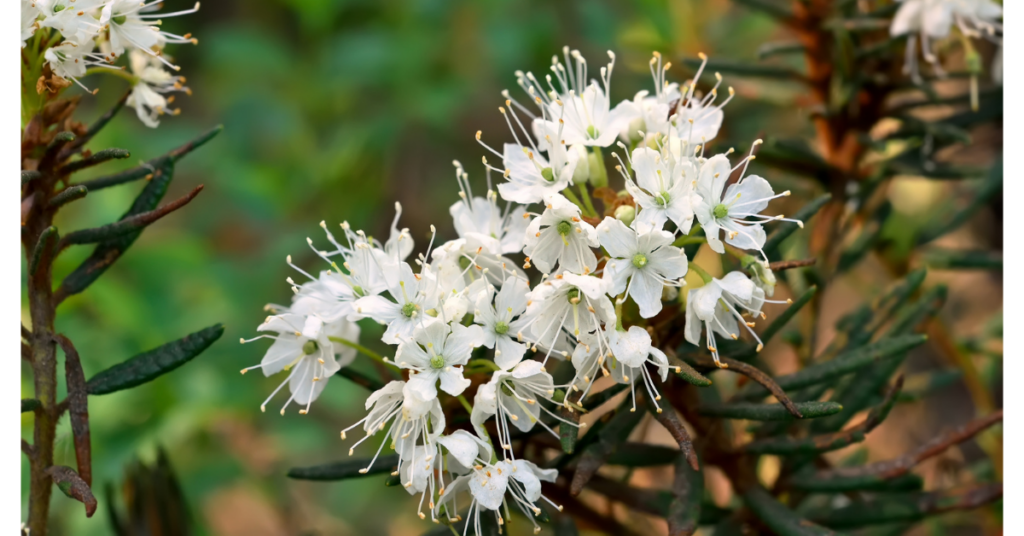Ledum – Homeopathic Remedy
Ledum (Ledum palustre)
Ledum is an extremely versatile plant, being used over the years to repel insects, mice, and moths, to protect flour from going mouldy, and to strengthen the intoxicating effects of beer!
The leaves contain a volatile, aromatic oil similar to camphor. The plant is prized for its antiseptic properties, and it is, therefore, an invaluable first aid remedy.
It has been posited that ‘Ledum’ comes from the Greek word ‘ledos’, which means ‘woolly robe’ – a reference to the leaves of the plant, which are covered in brown, woolly hairs on the underside. But it is more commonly believed that Ledum derives from the Latin word ‘laedere’ meaning ‘hurt’, and which may be connected to its intense headache-causing fragrance. ‘Palus’ is Latin for ‘bog’ or ‘marsh’.
Other names: Wild rosemary, marsh tea, marsh rosemary, northern Labrador tea. In 1990, Ledum palustre was scientifically reclassified as Harmaja (Rhododendron tomentosum).
Description and places it grows in
An evergreen shrub with elongated, dark green leaves (approx. 1-2″ / 2.5-5 cm in length), which are smooth and shiny on the upper surface, and covered in brown, woolly hairs underneath. The bush grows in the damp, marshy areas of northern Europe (especially Scandinavia and Ireland), and north America, plus parts of Asia.
Parts used
Fresh parts of the flower, which are dried and ground into powder.
Uses
Homeopaths may prescribe this remedy for:
Animal bites, insect stings, wounds and lacerations (skin tears) displaying the following symptoms: Bruising; sharp, stabbing pains; inflammation; redness; swelling; throbbing; feverish symptoms of chills and shivering.
Gout displaying the following symptoms: In the big toe.
Rheumatic pains displaying the following symptoms: In the feet, pains that radiate upwards; hot, painful, stiff joints and tendons; cold skin.
People requiring this remedy will feel worse: If exposed to heat; with touch; at night.
People requiring this remedy will feel better: In cool conditions; with cold applications to the painful areas.
People suitable for this remedy: Liable to become withdrawn and irritable when ill, as well as getting hot and sweaty at night, making them throw off the bedclothes. They also tend to suffer from sprained ankles and itchy skin on the feet and ankles.
The information given on this site about homeopathic remedies is just a general overview. Classical homeopathy takes all the patient’s symptoms into account and prescribes upon the “Totality of Symptoms”, thus finding the precise remedy that matches the patient’s symptoms perfectly.
Here, at The CMA we recommend that anyone interested in learning more about homeopathy and the fascinating remedies that homeopaths use should take an introduction course to homeopathy, which will help you to understand how to become a good home first-aid prescriber. This is ideal for ‘acute symptoms’. However, if you want to learn more – with a view even to becoming a professional homeopath, who is educated highly enough to be able to treat chronic conditions, you’ll need to be prepared to spend many years learning this vast and fascinating topic – along with anatomy, physiology and pathology, history of medicine, homeopathic philosophy, and much more. You’ll find both kinds of courses here on this site – head to our section on Find a CMA Member and search under CMA Registered Training Schools.

